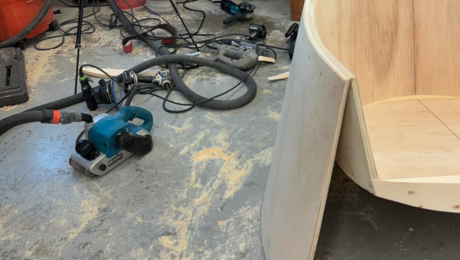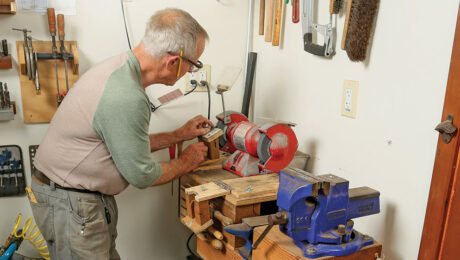Treat Your Feet
Anti-fatigue mats are an affordable cure for concrete floors
Synopsis: Spending all day on a concrete workshop floor is punishing to your back, legs, and feet. Some woodworkers solve this problem by installing a new shop floor with a more resilient surface. But when that’s not an option, anti-fatigue mats come in very handy. We took a look at the common mats that are available and found out which ones work best in the woodshop. If you’re suffering from hard-floor fatigue and working within a budget, these mats are the solution you need.
Any woodworker who spends long afternoons on a concrete floor in the basement or garage knows there is a physical price to pay for enjoying one’s hobby. Research confirms that standing on a hard floor for hours at a time will leave you with achy feet, legs, and back. Concrete is a punishing surface.
The solution is to put something more forgiving between your feet and the concrete. In FWW #174, we looked at a variety of shop flooring options including interlocking tiles of PVC or wood composite. And in this issue, art director Michael Pekovich shows how to install a shop floor of 3⁄4-in. plywood over 2×4 sleepers.
But what if you don’t want or can’t afford a whole new shop floor? The common answer for most people is anti-fatigue mats, those rubbery slabs that go underfoot where you spend the most time standing. With a little digging, I uncovered a wide range of choices. But before whipping out the Taunton Press credit card, I did a bit of research to see what the experts say.
They really do work
There are no standards—industry, government, or otherwise—for what constitutes an “anti-fatigue” floor mat. In general, they are made of rubber or closed-cell foam and they range from 3⁄8 in. to 1 in. thick. But studies show that these mats do prevent pain in the feet and legs. One recent study at the University of Pittsburgh concluded that anti-fatigue mats made a significant difference, and especially so when the test subjects stood for more than two hours.
Exactly how they work is a bit of a mystery, however. Apart from providing a simple cushion between foot and floor, one theory holds that the mat’s resilience encourages subtle movements of the feet and legs that help promote circulation. This keeps the blood from settling uncomfortably in your lower limbs.
From Fine Woodworking #216
For the full article, download the PDF below:





















Log in or create an account to post a comment.
Sign up Log in